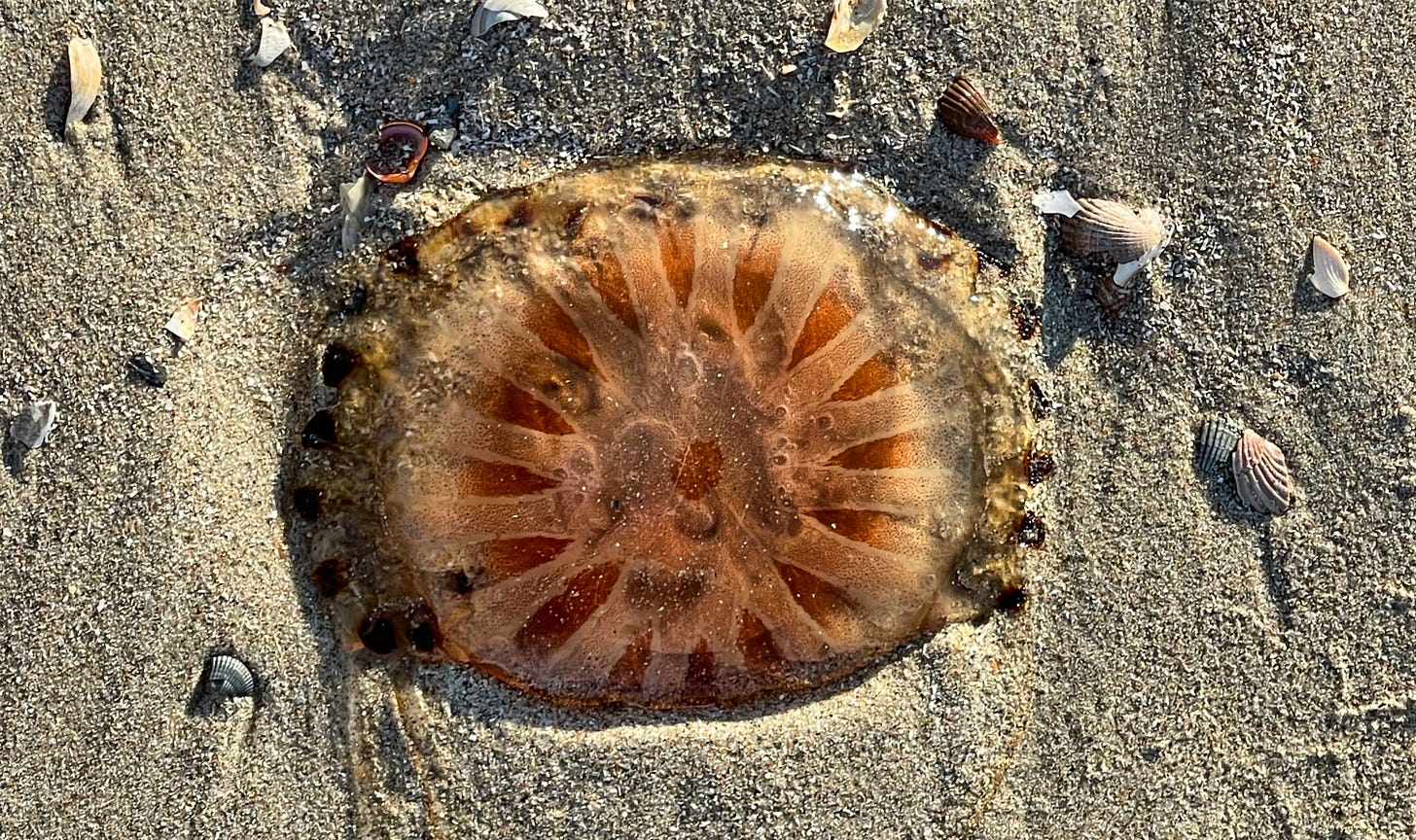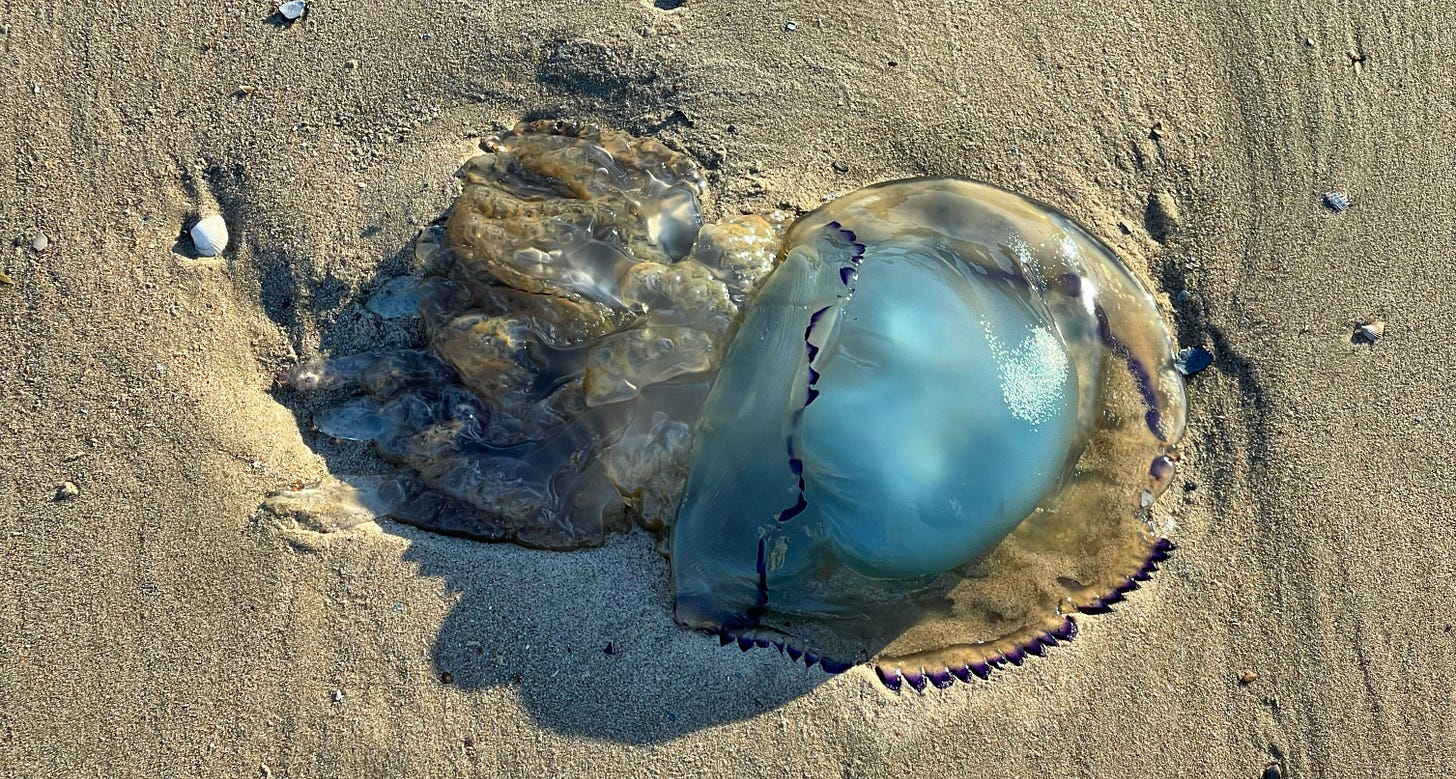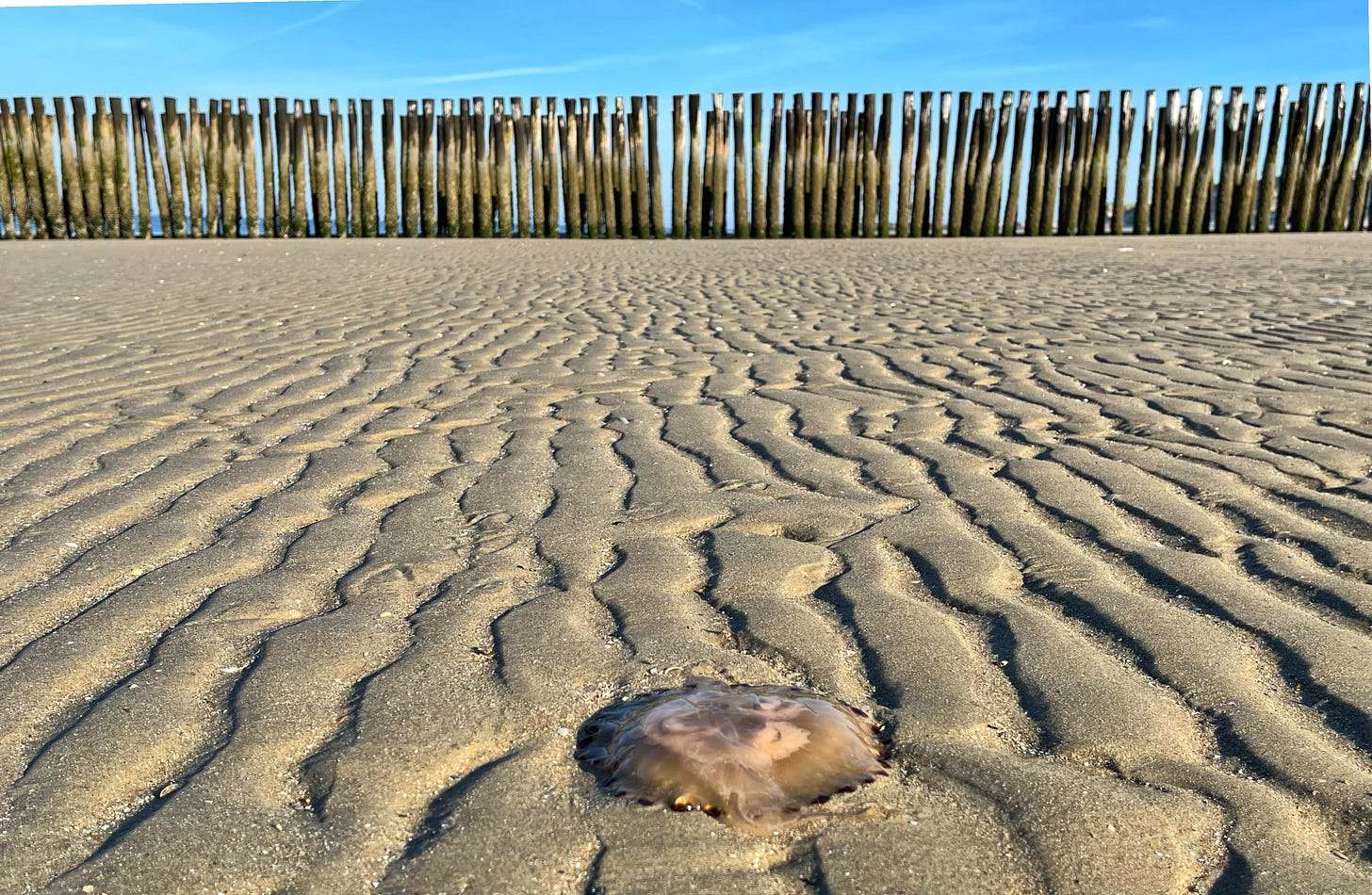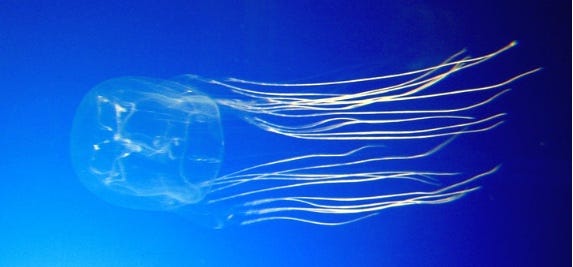Ten facts about jellyfish that make exciting conversation when you swim in the ocean.
Island Stories #46: Some species of jellyfish thrive during the climate crisis

When you find jellyfish on the beaches or in the water when you swim in the sea, how do you know which ones are dangerous? It is good to have a basic knowledge of the main types of jellyfish you find in the ocean where you go for a swim, especially now that some species of jellyfish seem to enjoy global warming much better than we do.
There are about 2,000 jellyfish species worldwide. All of them sting, but not all of them have an intense sting that gets through human skin, so we hardly feel those stings, if at all. But about a hundred types of jellyfish are dangerous to humans.
Jellyfish aren't fish. They belong to the invertebrates and consist of 95% or more water with a thin membrane around them. Most have tentacles on their hats, which they use to catch plankton and small fish. Once they've gathered a meal, they bring it to a cavity under the hat, which acts as both mouth and stomach.
You have to stay away from these tentacles, they are always poisonous, but they vary in strength and length, from just an inch to a shocking length of seventy meters (more than 200 feet). Jellyfish are found worldwide, in both cold and warm water. They move with the help of the wind and current, which explains why you regularly encounter jellyfish washed up on the beach.

This morning, I went for a swim while there were many jellyfish washed ashore. For instance, this beauty is a compass jellyfish, which you can easily recognize with its brown and v-shaped patterns. I often see them in summer and autumn. Its tentacles can grow up to two meters (six feet). A sting leads to injuries similar to the welts of a whip. Blisters and swelling may develop, which disappear after a few hours.
Luckily, my island is far from where the box jellyfish swims. It is considered the deadliest jellyfish, and some experts say this is even the most deadly creature in the ocean. There are over 50 species of box jellyfish, and some of them release toxins that are 100 times stronger than the bite of a cobra. An example is the Irukandji jellyfish, which is translucent and often measures only one or two centimeters (less than an inch) in diameter. But their tentacles can reach up to one meter (3 feet) long. I thought they only lived near the Great Barrier Reef. Still, while reading about them, I learned that they live throughout the world, including holiday paradises like Bali, Thailand, the Caribbean, Hawaii, South Africa, and even countries like the United Kingdom.
You also don't want to encounter another family member of the box jellyfish known as the Sea Wasp jellyfish. This one is likely the most deadly jellyfish on the planet. It has the ability to kill up to 60 people with one dart. Which is worrying enough, but wait for it: a Sea Wasp has half a million darts on each of its tentacles. Oh, and there are more tentacles: 60, and each can be 3 meters (10 feet) long.
This brings me to the calculation of 60 (people that can be killed by one dart) x 60 (tentacles) x 500,000 (darts) = 1,800,000,000. In other words, just four of these Sea Wasps could kill all humans on the planet. That's, of course, just theory. In practice, we have other worries on our planet, and we are to blame for those, not the sea wasps.
So it would be best if you looked out for this one; it has killed people within three minutes. And a box jellyfish is indeed is well equipped to look out for you; it has a jaw-dropping number of 24 eyes of four distinct types. Two of the 24 eyes can see in color and are very similar to our own eyes. Furthermore, scientists believe that all those eyes make it possible to have a full 360 degrees of vision.
When you swim in the sea, it is good to know which jellyfish are in your area. You should know which ones are dangerous and how you can protect yourself, for instance, by staying in a particular area, not swimming during specific wind conditions, or by wearing a lycra suit. Try to avoid touching any jellyfish, even when washed ashore, because it is not always easy to identify them.

But like all animals, you will likely treat them with more respect if you know a bit more about them. I am, for instance, fascinated by their long presence on this planet. They were happily drifting around in the oceans about twice as long ago as when the first insects or bony fish appeared. Dating back 600, 700, or even more million years ago, they were around like three times longer than the very first dinosaurs.
Did you notice more jellyfish in the past decade?
That is well possible. Some species of jellyfish thrive on global warming, which adds to my many worries about global warming. At warmer ocean surface temperatures, particular fish species benefit from longer spawning seasons, providing more food for jellyfish. Unfortunately, their growth in numbers leads to other disruptions in the ecosystem and more harmful stings and negatively impacts tourism and fishing industries. Their increase in numbers also explains the record-breaking beaching by millions of the sailor jellyfish, a type that has a sail sticking out above the water.
The next time you swim with friends in the ocean and feel it is time to swim back to the beach, just recall some of these fun facts, and your friends will propose to get out of the water.
If you got this far and are reading the free version, please take a paid subscription to this newsletter for the full experience and to support independent writing. If you pay your waiter when you enjoyed your meal, you could also pay your writer if you enjoyed the article.
Notes:
https://www.americanoceans.org/facts/what-is-the-deadliest-jellyfish/
https://oceana.org/marine-life/corals-and-other-invertebrates/sea-wasp
https://www.nytimes.com/2011/06/07/science/07jellyfish.html?_r=1
https://www.pbs.org/wnet/peril-and-promise/2021/04/jellyfish-climate-change/
Photo box jellyfish: Avispa marina.jpg: Guido Gautsch, Toyota, Japanderivative work: Mithril, CC BY-SA 2.0 <https://creativecommons.org/licenses/by-sa/2.0>, via Wikimedia Commons








Remember getting stung by a jellyfish and it was not a nice feeling. Seems in the Northeast August and September are when we see many of them. They do seem to be increasing and probably the warmer waters due to climate change are responsible. They are a favorite food of sea turtles but if they are increasing I don’t think the sea turtles will make much of a difference. Thanks for an interesting and informative article.💛
🌻 Good morning,
a fine read thank you Alexander,
living in a lycra wetsuit from now on seems a good idea (-:
Jellyfish I have poked at on the beach but never thought much of them, and hoping now that I will never be Jellified in the future . . .
Wonderful photos, I can't remember that I ever have seen those Jellyfish.
I also enjoyed the PBS podcast 'Jellyfish" by The Sweaty Penguin, website link.